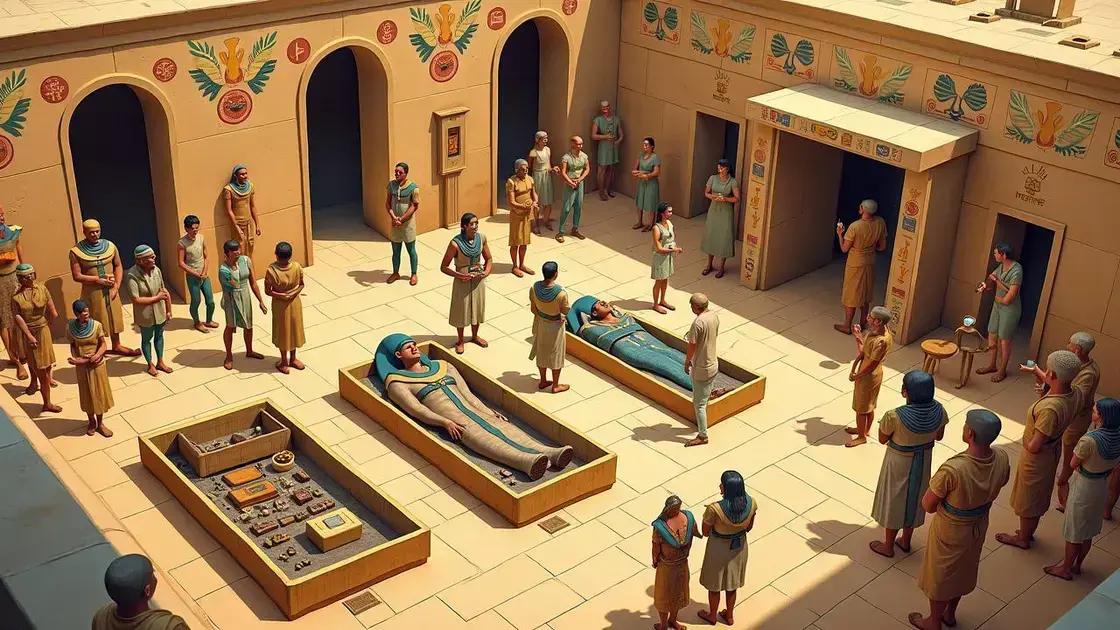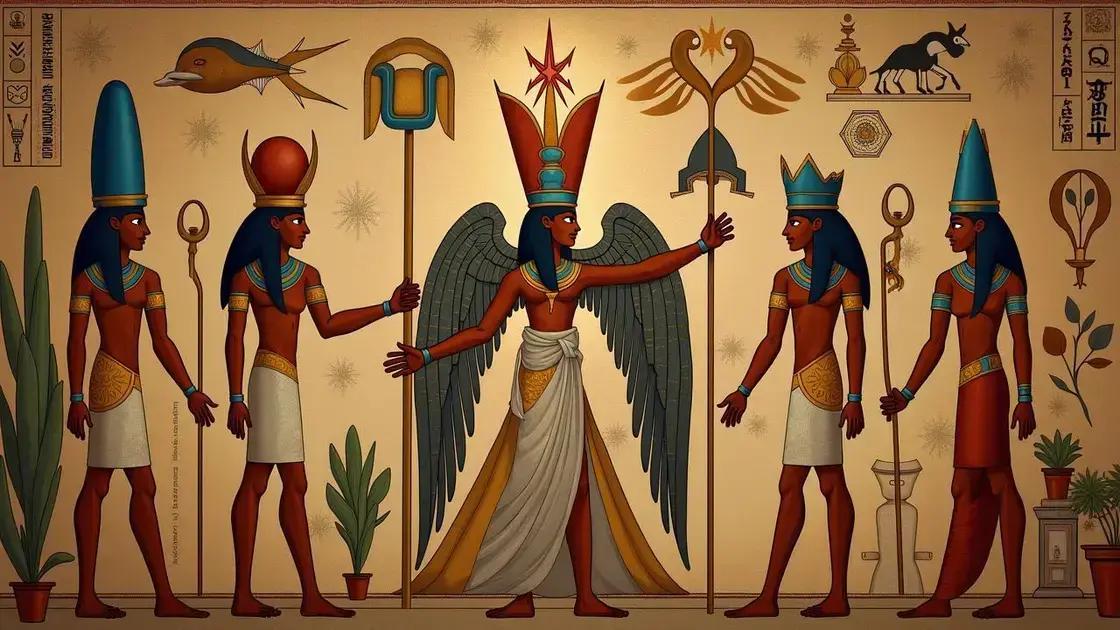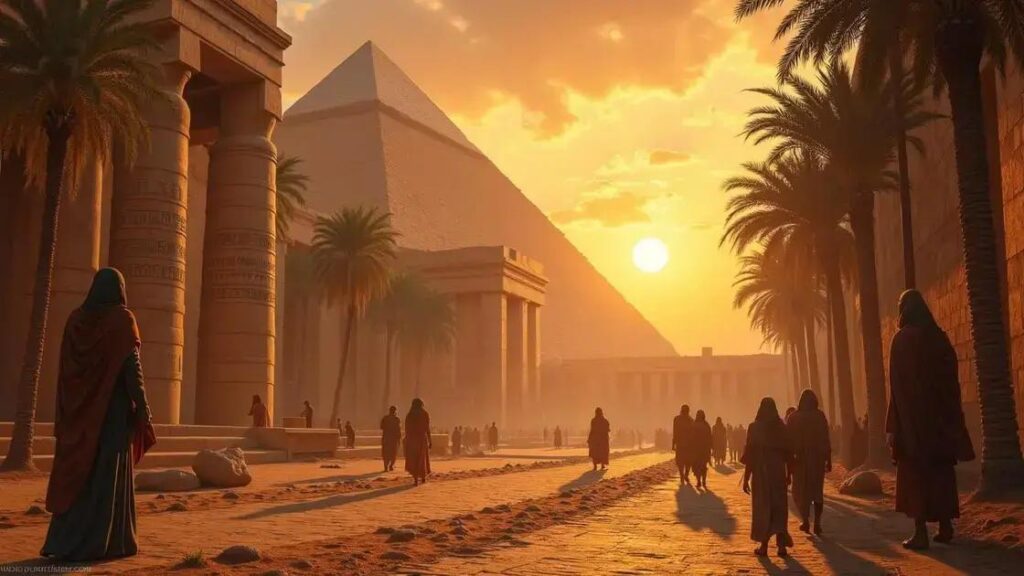The article explores the intriguing aspect of the “Trick of the Egyptians: myth or reality?” It examines ancient Egyptian practices, debunking common myths like the Curse of the Pharaohs, and highlights the cultural significance of their rituals and beliefs, providing a comprehensive perspective on their enduring legacy.
The allure of ancient Egyptian culture has captivated generations. From pyramids to pharaohs, the Trick of the Egyptians has sparked countless theories—are these tales myth or reality? In this article, we delve into the mysteries surrounding ancient practices, assess the validity of these enchantments, and shine light on the powerful beliefs of the Egyptians. Join us on this journey of discovery to uncover both historical facts and the magic woven into their stories.
Exploring Ancient Egyptian Practices

The ancient Egyptians practiced a variety of intriguing customs that reflected their beliefs and way of life. From elaborate burial rituals to daily offerings to gods, these practices painted a vivid picture of their culture.Burial Practices were essential in ancient Egyptian society. They believed in an afterlife where the soul would continue to exist. As such, elaborate tombs were constructed, filled with treasures and items needed for the journey. Mummification was vital for preserving bodies to ensure safe passage to the afterlife. This process involved careful removal of internal organs and embalming, a ritual as complex as it was fascinating.
Daily Rituals and Offerings
Daily life involved numerous rituals aimed at pleasing the gods. Egyptians made offerings of food, flowers, and incense at temples, showcasing their devotion. Priests held important roles, performing rituals to maintain the favor of the gods and ensure the prosperity of the land. These rituals not only connected people to the divine but also reinforced social order and responsibility.
Art and Symbolism
Art was another integral part of Egyptian practices. Each piece served a purpose, whether in the form of wall paintings in tombs or vibrant hieroglyphs telling stories. Each symbol had significant meaning—ankh for life, scarab for protection. Understanding these symbols provides greater insight into their beliefs and values.
By exploring ancient Egyptian practices, we see a culture deeply intertwined with their spiritual beliefs, reflecting a rich tapestry of life that continues to intrigue historians and enthusiasts today.
Unveiling the Truth Behind the Myths

Many stories about ancient Egypt revolve around mysteries and myths, often shaping perceptions of their civilization. Myths can make reality difficult to decipher. Understanding the truth behind these myths uncovers fascinating insights about Egyptian life.
The Legend of the Curse of the Pharaohs
One popular myth is the Curse of the Pharaohs, claiming that those who disturb a tomb will face misfortune. This legend gained traction after the discovery of King Tutankhamun’s tomb. However, most archaeologists believe that the supposed curse is merely a creation of sensationalism and has little basis in fact.
Gods and Goddesses vs Superstitions
Another myth includes ideas about gods and literal interpretations of their powers. Many believe the ancient Egyptians thought gods controlled every aspect of life. In reality, these deities represented fundamental principles and natural forces, providing moral lessons rather than direct intervention in daily events. The stories serve as allegories rather than factual accounts.
Magic and Healing Practices
Magic is often portrayed in exaggerated ways, as if it were an everyday part of life. Ancient Egyptians did use magic and healing chants, but these were part of their religious beliefs and not a guarantee of miraculous outcomes. Healing involved both medical knowledge and spiritual practices, blending science and faith.
By unveiling the truth behind these myths, we shed light on the complexity of ancient Egyptian culture, revealing a society rich with knowledge, belief, and tradition.
In Summary: Understanding the Egyptians
The exploration into the Trick of the Egyptians reveals a rich tapestry woven with both truth and myth. Through examining ancient practices and unveiling the truth behind popular legends, it becomes clear that Egyptian culture was complex and deeply meaningful.
By distinguishing between myth and reality, we appreciate the sophistication of their rituals, the significance of their beliefs, and the lessons they imparted. This understanding enriches our view of history, allowing us to appreciate the legacy of the ancient Egyptians and the fascination they continue to inspire today.
As we peel back the layers of time, we find that the truths of ancient Egypt are not only compelling but also essential to understanding human civilization’s journey.
FAQ – Frequently Asked Questions about Ancient Egyptian Practices
What are the common myths surrounding ancient Egyptians?
Common myths include the Curse of the Pharaohs, exaggerated magic, and the literal interpretation of their gods and goddesses.
Why were burial practices important in ancient Egypt?
Burial practices were crucial as Egyptians believed in an afterlife, and elaborate tombs ensured safe passage for the deceased.
Did ancient Egyptians really use magic?
Yes, but magic was a blend of spiritual beliefs and medical knowledge used in rituals rather than everyday life.
How did ancient Egyptians view their gods?
Ancient Egyptians viewed their gods as representations of natural forces and moral principles, not as literal controllers of life.
What is the significance of symbolism in Egyptian art?
Symbols in Egyptian art carried important meanings that conveyed spiritual beliefs and narratives, providing insight into their culture.
How can we differentiate between Egyptian myths and historical facts?
By analyzing archaeological evidence and historical texts, we can separate sensationalized stories from the actual practices and beliefs of Egyptians.












